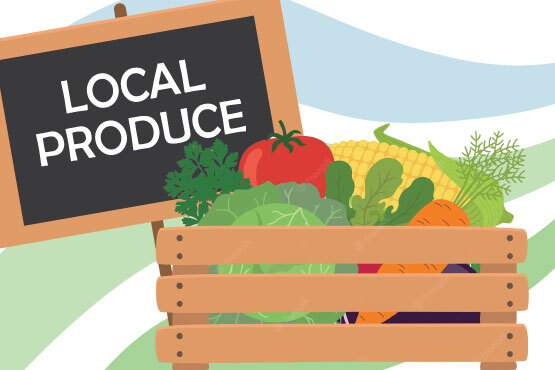In recent years, the farm-to-table movement has gained tremendous popularity. An increasing number of diners seek out restaurants that use locally sourced ingredients. Naturally, you might wonder if it's time to introduce more locally sourced ingredients to your menu. While there are certain advantages, it's essential that you weigh the pros and cons carefully. This article explores the benefits and risks of incorporating locally sourced ingredients into your restaurant's offerings, along with recommendations for striking the perfect balance.
Strengths of Using Locally Sourced Ingredients
Freshness and Quality
When you source ingredients locally, you can often guarantee fresher and higher-quality products. Produce and meats don't need to travel long distances, ensuring they are at their peak when they arrive at your restaurant. Farm-to-table freshness can elevate the taste and presentation of your dishes, leaving a positive impression on diners.
Supporting the Local Economy
Purchasing from local farmers and producers helps bolster your community's economy. It fosters community and strengthens relationships between your restaurant and local suppliers, potentially leading to mutually beneficial partnerships. According to Sustainable Connections, for every dollar spent at a locally-owned business, $0.68 is recirculated and remains in the local economy.
Sustainability and Environmental Impact
Using locally sourced ingredients can reduce your restaurant's carbon footprint. It minimizes transportation emissions, and you can often find suppliers who employ sustainable farming practices, reducing the overall environmental impact of your menu.
Menu Innovation and Seasonal Variety
Local ingredients change with the seasons. By embracing the availability of seasonal ingredients, you can regularly update your menu with new dishes, keeping it fresh and exciting for returning customers.
Limits of Locally Sourced Ingredients
Price Fluctuations
Local ingredients can be more expensive due to the higher costs associated with small-scale farming and transportation. Price fluctuations can affect your restaurant's profitability and menu pricing.
Reliability and Consistency
Local suppliers might be more vulnerable to unpredictable factors like weather conditions, crop failures, or supply chain disruptions. Depending on your location, locally sourced ingredients may not be readily available. Lack of ingredient availability can lead to inconsistency, making menu planning challenging.
Competition and Demand
As the demand for locally sourced ingredients grows, so does the competition among restaurants for access to these products. You may find yourself competing with other establishments for the same limited resources.

Research and understand your customer base to ensure you stand out from your competitors.
Seasonal Limitations
While seasonality can be an advantage, it can also pose challenges. Diners may expect certain dishes year-round, and relying solely on seasonal ingredients can limit your ability to meet these expectations.
Logistical Challenges
Sourcing from multiple local suppliers may require more time and effort regarding coordination, ordering, and delivery. This can increase the complexity of your restaurant's operations and requires a more detailed inventory management POS setup.
Blending Locally Sourced Ingredients into Your Existing Menu
Now that we've explored the pros and cons of using locally sourced ingredients, it's clear that striking the right balance between local sourcing and other suppliers may be the key to success. Here are some strategies to help you navigate this decision:
- Diversify your suppliers: While emphasizing local sourcing, maintain relationships with other suppliers for essential ingredients that may not be locally available or economically viable to source locally.
- Collaborate with local producers: Forge partnerships with local farmers, growers, and artisans to establish reliable supply chains and ensure a consistent flow of ingredients.
- Educate your customers: Inform your diners about your commitment to local sourcing. Many customers (especially Gen Zs) are more willing to support restaurants that prioritize local ingredients if it aligns with their values.
- Plan for seasonal variations: Embrace a seasonal menu that takes advantage of the available ingredients. Highlight the unique flavors and dishes that each season offers, and use a POS with sophisticated inventory capabilities, so you can ensure your ingredients stay fresh.
- Monitor costs carefully: Keep a close eye on costs and adjust your menu prices accordingly to maintain profitability while using locally sourced ingredients.
Conclusion
In conclusion, the decision to incorporate locally sourced ingredients into your restaurant's menu is complex. While there are undeniable benefits like freshness, community support, and sustainability, there are also challenges with cost, availability, and consistency. By finding the right balance between local and non-local suppliers, you can create a menu that showcases the best of your region while meeting the expectations and tastes of your diners. As the farm-to-table movement evolves, small restaurant owners who navigate these challenges thoughtfully can reap the rewards of culinary innovation and community support.
Ready to learn more about how you can create your perfect menu? Download our eBook: Creating A Better Menu for Your Restaurant.
Posted on Thu, Sep 07, 2023 @ 08:09 AM.
Updated on August 2, 2024 @ 9:51 PM PST.


